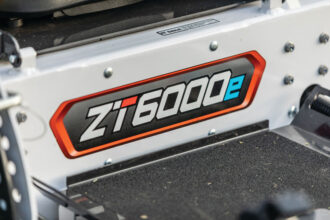Five keystone pillars of profit (Part II): Accountability and strategic evaluation for growing profits
Second article in a series
By Jim Yount
Being oriented by simplicity rather than complexity, you will recognize the “Five keystone pillars of profit,” by Jim Yount Success Dynamics (JYSD) as being typical of today’s generally accepted accounting principles. I’ve been told the Italians developed the double-entry accounting system about 500 years ago. Perhaps that’s why in these hi-tech times of the 21st century, we at JYSD chose to attach “Ageless formula for success” to the title of this series.
“Five keystone pillars of profit” is JYSD’s strategic business planning and consulting approach to maximizing profitability. It is easy to track your business performance by reviewing a typical accounting report usually titled, “Income Statement and Balance Sheets,” which are available at the end of each month from most accounting software.
What is a “pillar”? In the real world, a “pillar” is defined as a part of a vertical superstructure support, of a building or bridge. These five keystone pillars (support) of profit are identified using mathematical principles. Let’s take a brief look at these five keystone pillars of profit. They are as follows:
#1 NET SALES: Your income from the products and services you sell.
#2 COST OF GOODS: What you pay your suppliers for the inventory you sell.
#3 GROSS PROFIT: The money left over after you pay your suppliers for inventory. This is your discretionary income.
#4 OPERATING EXPENSES: The cost to meet sales goals and to keep the doors of your store open (e.g. office expenses, telephone, utilities, insurance). These are discretionary expenses.
#5 PRETAX NET PROFIT: Any money left after paying all operating expenses. From this, you must do the following:
* Pay income tax.
* Pay your debt burden.
* Provide for other goals and objectives.
Measuring business performance is a numbers game
Profit Pillar #1: NET SALES
“We all live by sales.” That’s a favorite quote of mine from my German friend Herr Lange. And he is absolutely right. Sales is the activity that feeds the revenue stream of money. Without sufficient revenue/income, the business will eventually close its doors.
Whether your annual sales are $100,000 or $100 million, every penny of every dollar earned in your business will go somewhere. You must decide, up front, where you want that money to go. If your thought process is to sell as much as you can and cover expenses, that’s all you will do. Your sales will be just enough to cover expenses. That’s why all businesses need an annual strategic business plan to help keep focused on a destiny. As we move forward, please remember: The only way to keep score in business is to count the money.
On my desk is a copy of a publicly traded company’s annual report. It is from one of America’s top 500 companies. This document contains 53 pages. On page 11, an overview stated that fiscal 2009 was challenging. Using the same simple, generally accepted accounting principles as used by much, much smaller companies, the company’s Results of Operation state that it made the following report to demonstrate its profitability. I call your attention to the report’s simplicity.
RESULTS OF OPERATION
Net Sales of $20.9 billion, a decrease of 16 percent. The bottom line ends with Net Earnings of $2.136 billion. Listed between these two Net numbers are a few items: Gross Profit dollars, including percent, Operating Expenses, including percent, earnings before tax, and percent, plus interest expenses, and Net Earnings after tax is 9.7 percent. One line is listed as other deductions. Since this is a manufacturing company designing and producing goods for retailers, there is complexity in its operation.
Example: Actual Case History (No ID)
Because of the ongoing recession, I determined it was necessary to select an actual outdoor power equipment case history from JYSD’s consulting files prior to the recession. The numbers applied have been rounded. This dealer had been in business 30-plus years at the time. It is located in the southeastern United States. Analysis and strategic business planning was developed by JYSD using the lowest common denominator for identifying the source/cause of insufficient profitability. What is necessary for improving overall operating efficiency while growing all departments in harmony with the strategic business plan.
NET SALES (No brand ID):
Annual net sales were $3,400,000. Prior year Net Sales were $3,100,000, up $300,000, or 9.68 percent. Sales mix was eight major brand product lines represented.
The number one-selling brand had equipment net sales of $560,000 at a 10-percent margin. Parts and accessories sales were $88,000 at a 28-percent margin. Total sales for this brand were $648,000 with an overall profit margin of 12.53 percent.
The number two-selling brand had equipment net sales of $509,000 at a 19.5-percent margin. Parts and accessories sales were $235,000 at a 38-percent margin. Total sales for this brand were $744,000 with an overall profit margin of 25.49 percent.
The number three-selling brand had equipment net sales of $322,000 at an 8.1-percent margin. Parts and accessories sales were $15,000 at a 36-percent margin. Total sales for this brand were $337,000 with an overall profit margin of 9.35 percent.
The three top-selling brands combined total was $1,729,000, representing about half, or 50.85 percent, of $3,400,000 in annual sales.
The number four-selling brand had equipment net sales of $239,000 at a 15.79-percent margin. Parts and accessories sales were $66,000 at a 32.34-percent margin. Total sales for this brand were $305,000 with an overall profit margin of 19.36 percent.
The number five-selling brand had equipment net sales of $125,000, at a 15.77-percent margin. Parts and accessories sales were $91,000 at a 29.88-percent margin. Total sales for this brand were $216,000 with an overall profit margin of 21.73.
The top five-selling brands — including equipment, parts and accessories for each — had combined Net Sales of $2,250,000. Sales of the next 18 brands of equipment, parts and accessories totaled $850,000. Sales of all equipment, parts and accessories totaled $3,100,000. Add service department labor income of $300,000, total company sales were $3,400,000.
COST OF GOODS: $2,400,000 (equipment, parts, accessories and tech service), or 70.50 percent
GROSS PROFIT: $1,000,000, or 29.40 percent
As a result of reviewing Product Performance and Net Sales Mix: Ratio pages, which were completed during the process of developing a personalized strategic business plan, we at JYSD were able to create these pages of analysis. Next month, you will have a copy of article three in your hands. Together, we will reference article two and discuss how you can make a difference in increasing net sales in the future.
We will clearly define how to get goods into your warehouse at a lower cost, and how to get goods and services out the door and paid for while earning a greater profit.
I trust you will have a Happy Thanksgiving!
Jim Yount is the founder and chief executive officer of Jim Yount Success Dynamics LLC. For more than 30 years, he has hired, trained, managed, sold, marketed, and motivated. Extensive real-world experience in retailing, distribution and working with manufacturers, both domestic and international, has earned Jim the reputation as a trustworthy and knowledgeable professional in his field. As a results-oriented speaker, he is dedicated to inspiring groups of 30 to 3,000 to develop their talents and realize their full potential. As a business consultant, teacher and coach, Jim is experienced at challenging leaders to explore their operational procedures and change unacceptable practices that are producing poor results. For more information, contact Jim at jimyount@hughes.net or (903) 796-3094 or visit his website at www.jimyountsuccessdynamics.com.


